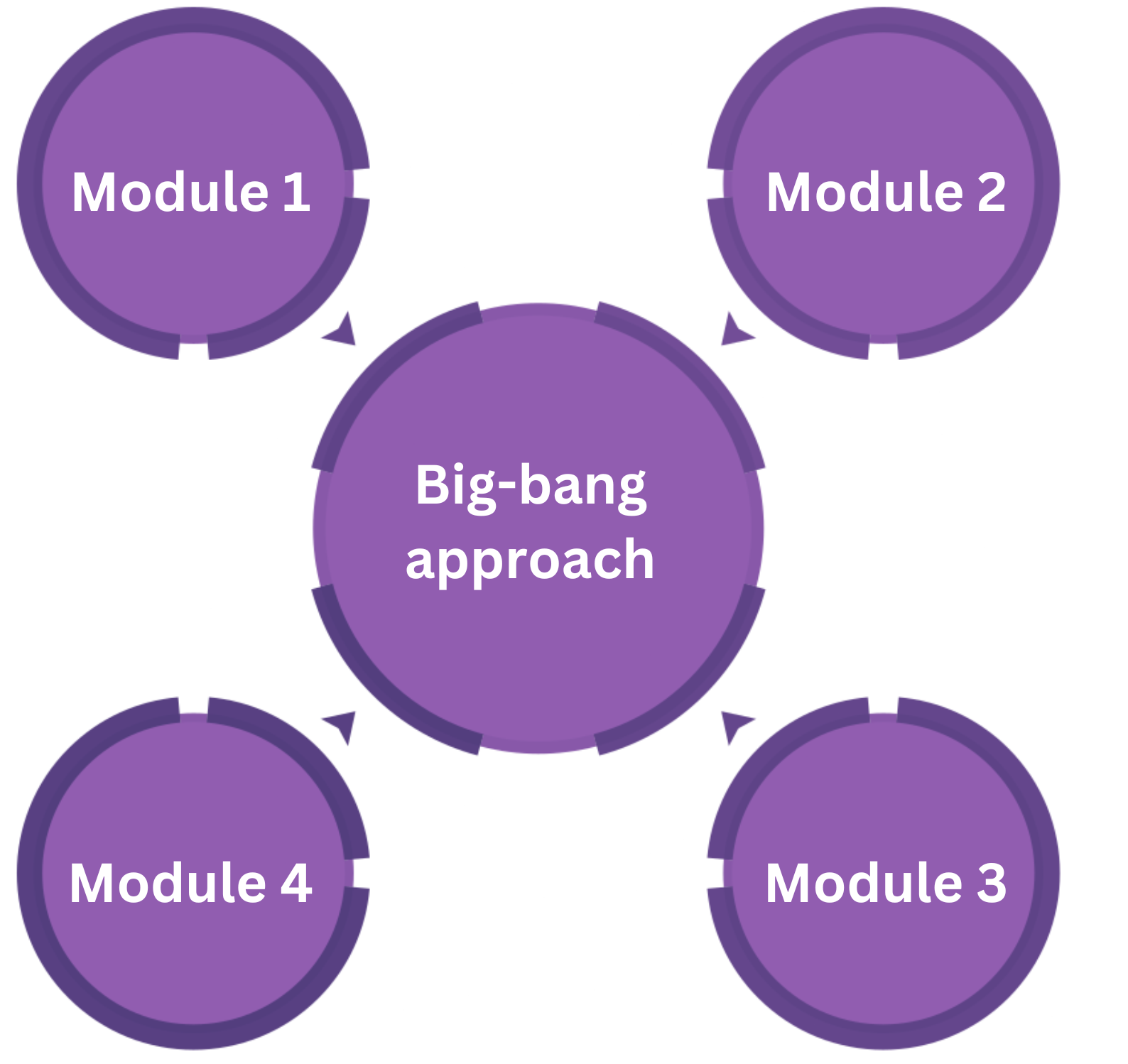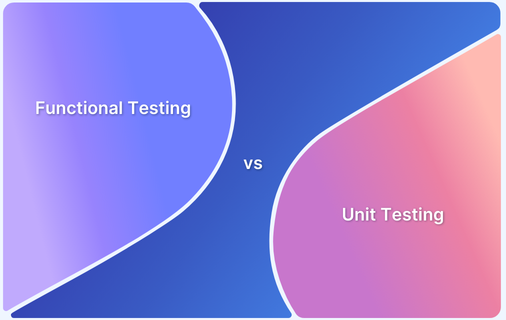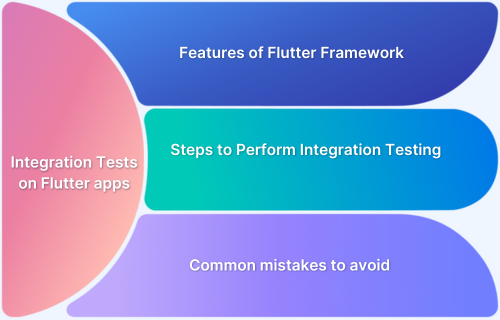For a software application, unit testing focuses on individual modules to ensure each one works correctly in isolation. Integration testing, on the other hand, examines how these modules interact, verifying that the complete system functions seamlessly.
Overview
Unit Testing
- Tests individual components or functions in isolation
- Focuses on one unit of code (for example, function, class, method)
- Easy to write, fast to run
- Helps catch bugs early in development
- Typically written by developers
Integration Testing
- Tests how multiple units work together
- Focuses on interactions between components, services, or systems
- Identifies issues in data flow or integration points
- Slower than unit tests, but critical for real-world validation
- Often done after unit testing is complete
Knowing the key differences between these two methods is crucial for applying them effectively
What is Unit Test?
Unit testing is a process of testing an individual code of an application in isolation to ensure that the code is working fine. The testing is done in isolation to avoid any code interaction with dependencies.
- The primary characteristic of a unit test is that it is performed in isolation; that is, the code under test should not rely on external systems.
- Unit tests are designed to ensure the code meets the developer’s expectations as intended.
- In addition, unit tests are carried out early in the development process to identify and eliminate the cost of bug fixes when the individual components are merged and tested as an entire system.
- Unit testing is easily executed in comparison to Integration tests.
Here is an analogy to understand Unit Testing further. You have a Car, and the tires are checked before integrating it into the Car. This is analog to a unit test in software.
Understand it deeper with a real example we may face while testing a website. For instance, the login component of a website usually has elements like a username, password, and a login button.
Here unit tests are done for individual components in isolation; in this case, the unit tests will cover portions such as ensuring that the field length is appropriate, input values are valid, the button is working fine, and more.
Also Read: Best Practices for Unit Testing
What is an Integration Test?
In integration testing, ensure that a group of modules works fine when integrated. Unlike in unit testing, an individual module is tested in isolation.
- Integration testing covers the connection between two or more modules.
- It is suitably carried out in large-scale industries with individual software vendors or ISVs.
- The sole purpose of Integration testing is to ensure all the modules work fine without disturbing the functionalities of the modules that are put together.
Take the previous analogy, in the car, if your tires are inserted, and then it is checked if these models of tires are working well along with this model of car, then it is integration testing.
Also, take the previous example of the login component. To ensure that the login button is only clickable when some entries are filled in the username and password parameter, it is considered Integration testing as it relies upon integrating other components in the test.
In companies, it usually happens that several developers are working on different components, so it becomes essential to perform integration testing when all the components are brought under one roof and work co-dependently.
Integration testing is of two types. Here is a brief look at both of them.
Big-bang Approach
In this type of Integration testing, all the components are coupled and tested. The main difference between this and system testing is that it is carried out only after unit testing to ensure all the module connections work fine. In System testing, the entire system is tested simultaneously, considering all the parameters.
Incremental Approach
In this type of Integration testing, unlike the Big-bang approach where all the modules are coupled and tested at once, in this approach, the modules are integrated one by one, and errors are identified using stubs or drivers. It is further divided into three more parts.
1. Top-down approach: This testing of modules is done from top to bottom, where the unavailable modules are replaced with the stubs.
2. Bottom-up approach: In this, modules are tested from bottom to up, where the unavailable modules are replaced with the drivers.
Note that stubs and drivers are the programs created by software developers to use them in place of unavailable modules. These are useful in bottom-up and top-down approaches if the module at later stages is unavailable initially.
3. Hybrid approach: It is also known as sandwich testing. The main layer comprises of software’s features. It takes advantage of both top-down and bottom-up approaches.
Key Differences between Unit Test and Integration Test
On continuing our discussion over unit testing vs integration testing, also understand some key differences between the both.
| Unit Testing | Integration Testing |
|---|---|
| It tests the individual component of the entire system at a time. | It tests the system when components are integrated to work together. |
| It is faster in execution as only a single component is tested. | It is slower in execution as multiple components at a time are tested. |
| It does not rely upon interacting with external dependencies. | It relies upon talking with outside dependencies. |
| It is conducted during the early development phase. Therefore, it is tested by a developer. | It is conducted after the development. Therefore it is tested by a tester. |
| Maintaining unit tests is fairly cheap. | It is costly to conduct and maintain Integration testing. |
| It identifies issues and bugs that lie within the component only. | It identifies all the errors that may lie when multiple components are under test. |
| It can be performed in the beginning phase of the development and then carried out anytime. | It is only carried out after unit testing and before system testing. |
Advantages and Disadvantages of Unit Test and Integration Test
Based on the abovementioned differences, it is generally easier to perform Integration testing and catch all errors than to waste time performing unit testing. It takes a very long time for Integration testing to fix tiny errors that can be captured by Unit testing.
Now that you established the key differences between unit tests and integration tests, examine their advantages and disadvantages.
Advantages and Disadvantages of Unit Testing
Here are the Advantages and Disadvantages of Unit Testing:
| Advantages | Disadvantages |
|---|---|
| Since we can perform testing of individual components in isolation, we can test any part without waiting for any position to be completed. | It cannot identify errors on the broader edge of the application. It is only helpful to catch errors in single components. |
| It allows regression testing, that is, to ensure that any change in the application hasn’t the existing functionality of the component. | Even when testing a very straightforward application, you cannot expect Unit testing to catch and resolve all errors in the application. |
| It helps you write better code as it indicates, such as when the class is big, difficulty in writing a test class, and more alongside your development. |
Advantages and Disadvantages of Integration Testing
Here are the Advantages and Disadvantages of Integration Testing:
| Advantages | Disadvantages |
|---|---|
| Integration testing offers a systematic procedure to set up your software by identifying all the errors associated with different levels of software. | It is very difficult to perform integration testing. The complexity while performing integration testing is fairly high compared to system testing. |
| It catches all the errors when several modules are working together. | Identifying and testing every connection between the modules is not very handy. |
| It broadens the coverage of tests performed in the software, making the product more reliable. | Several additional efforts are required such as properly creating stubs and drivers, without which it may result in inadequate testing. |
| It can be used in early as well as at the later stage of development; however, for more testing coverage, it is preferred in the later stages. |
Conclusion
In this example, we understood the difference between unit test and integration test. Both of the testing processes are equally important for the product. The higher efficiency from these tests is achieved when they are combined effectively.
- The process of writing and executing unit tests is generally faster, whereas analyzing the connections between several modules in the software is complex in integration testing.
- One benefit of unit tests is their speed, deterministic nature, and precise results.
- In contrast, an advantage of integration tests is that they cover the border scope that unit tests cannot cover.
Remember that Incorporating any testing practices is faster and easier to execute on a real device cloud. As far as possible, tests must be run in real user conditions to ensure complete accuracy of results.








